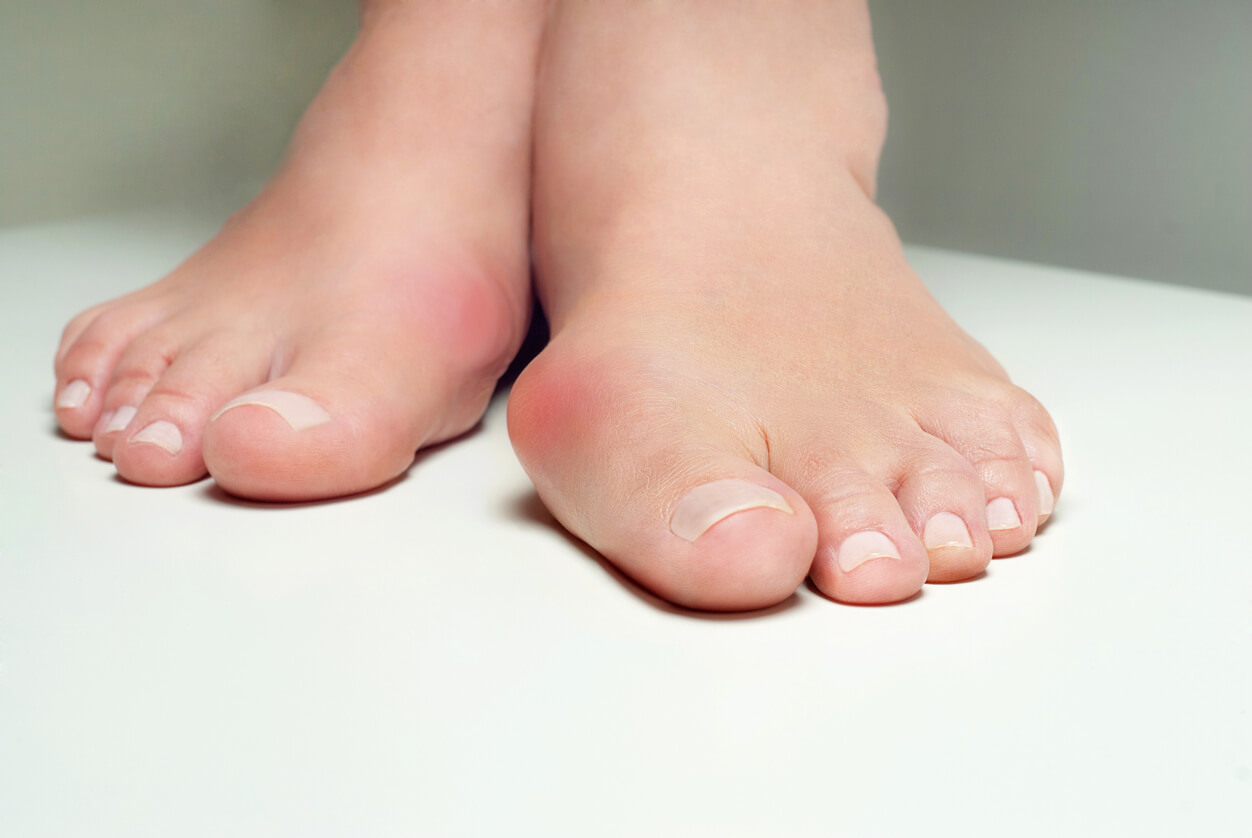Is it possible to prevent bunions from developing even if they run in my family?
Bunions are far more common than you may imagine. In fact, it is estimated that more than 50 percent of all women in the U.S. have bunions on one or both of their feet. Whether because they are unsightly, painful, or make buying shoes extremely difficult, anyone suffering with them has likely wondered if there was anything they could have done to prevent them from developing in the first place.
The good news is that, yes, there are steps that you can take that may prevent a bunion from forming. The bad news is that this thought rarely occurs before it is too late to make a difference. Once a bunion starts to develop, the most you can hope for is that some of those same methods may slow its progress and keep it from getting worse.
What Is a Bunion?
The Latin term for bunion is hallux valgus, and it is that bony bump that protrudes out from the base of your big toe. Hallux refers to the big toe and valgus describes something that is turned away from the body, a fairly apt description. The word “bunion”, however, was given to us by the Greeks. It meant turnip, which is also a good descriptor because once a bunion becomes swollen and reddish-purple, it can look like a little turnip attached to the side of the foot. And that is the last and only humorous fact about bunions.
Bunions are not only unattractive, but they can also be very painful as the joint at the base of the big toe continues to get increasingly larger and more protruding. They also make the process of buying shoes extremely difficult, especially when it comes to any type of dress shoe.
The exact cause of a bunion may not be possible to determine. For many, bunions are due to genetics. Others may develop as a result of an injury or medical condition, such as arthritis, or from a neuromuscular disease. For some, though, it is believed that bunions are the result from shoes that squeeze the bones of the feet into an unnatural shape. This theory would seem to be confirmed by the fact that, while men do get bunions, women get them at a far greater rate.
Suggestions for Bunion Prevention
If your genes are already predisposing you for bunions or if you have an injury or arthritis, there may not be anything that you can do that will prevent one from forming. You may, however, be able to slow the progress, and others without those risk factors may be able to prevent them entirely. Some of the steps that you can take that are believed beneficial if started at a young age include:
- give your toes plenty of room by choosing shoes with a boxier toe rather than a pointed one
- avoid high heels, not just when you get older, just don’t ever wear them
- exercise and stretch your toes, especially the big toe
Treatment for Bunions
Once bunions start to develop, they are likely to continue to get worse. While some combination of non-surgical treatment options may provide sufficient relief for many struggling with bunions, surgery may be recommended for others. There are several different types of surgery for bunions but, in general, they correct the alignment of the big toe and make any needed repairs of the surrounding tissue.
Bunion surgery will normally be done on an outpatient basis. Recovery will require the patient to be in a supportive boot and on crutches for several weeks. Full recovery will take around 3 months.
If you have questions or concerns about any foot or ankle issues, Dr. Christopher Hubbard is a board-certified Orthopedic Surgeon with Ortho-Care Wayne in Passaic County New Jersey, and is the former Chief of the Foot and Ankle Service at Mount Sinai Beth Israel in NYC.
To schedule an appointment, or if you just have questions, please use our convenient online contact form by clicking here.
